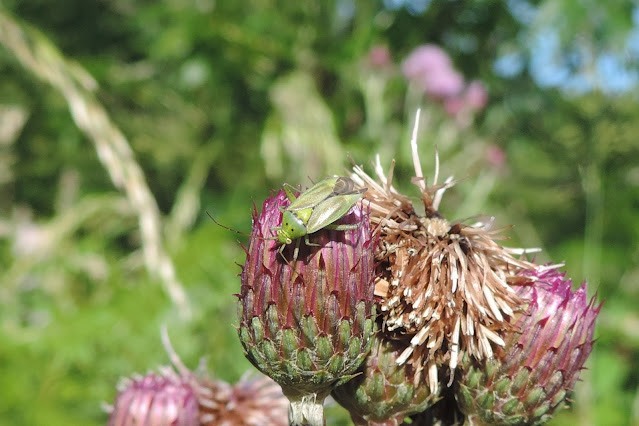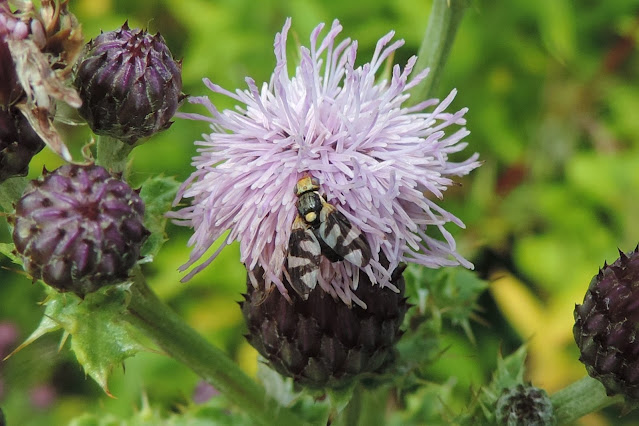The fortnight between hoverfly broods gives me time to photograph other insects over the last week. Some have been new to me or the valley. A few examples are below.
Last week Paul Parsons had a
Wool Carder Bee at his bug hotel which was new for the valley, having seen the photograph and learning the ID features I am now seeing them everywhere I go. I didn't know that the word "carder" means the behaviour of scraping hair from leaves, the hair is then carried in bundles beneath their body to be used as nest lining and are often seen low down on plants rather than feeding on the petals like this one in the photo and probably why I hadn't noticed them to date..

July and August is a good time to see plant bugs on flowering plants, there are 200+ different species in Britain and there is a good chance I haven't recorded any I come across. Above are two of the more common species 1. Closterotomus norwegicus and 2. Stenotus binotatus (Potato capsid).
Golden-ringed Dragonfly although common this time of year are always pleasing to see especially when perched like this one.
This Grass vetchling was also a first for me up Blaencaerau, so called because of the shape of the leaves.
Day flying moths are always to the fore this time of year like 1.
Six-spot Burnet and 2.
Burnet Companion.
Finally a selection of the more noticable flies around the scrub area near the old Caerau Railway tunnel entrance.
1. Palloptera saltum 2. a tachinidae fly, waiting for ID confirmation (possibly Gastrolepta anthracina) 3. Poecilobrothus nobilitatus 4. Urophora cardui 5. Xyphosia miliara
.JPG)












.JPG)


















.JPG)
.JPG)
%20(2).JPG)





